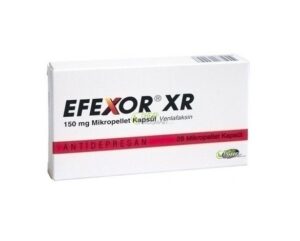What is Elavil and how is it used?
Elavil is a prescription medicine used to treat the symptoms of anxiety or agitation with depression, and Schizophrenia with depression. Elavil may be used alone or with other medications.
Elavil belongs to a class of drugs called Psychotherapeutic Combos.
It is not known if Elavil is safe and effective in children.
What are the possible side effects of Elavil?
Elavil may cause serious side effects including:
- easy bruising or bleeding,
- persistent heartburn,
- shaking,
- mask-like facial expressions,
- muscle spasms,
- severe stomach pain,
- decreased sexual desire,
- enlarged or painful breasts,
- black stools,
- vomit that looks like coffee grounds,
- severe dizziness,
- fainting,
- seizures,
- eye pain, redness or swelling,
- vision changes,
- fever,
- muscle stiffness,
- severe confusion,
- sweating, and
- fast or irregular heartbeat
Get medical help right away, if you have any of the symptoms listed above.
The most common side effects of Elavil include:
- drowsiness,
- dizziness,
- dry mouth,
- blurred vision,
- constipation,
- weight gain, and
- difficulty urinating
Tell the doctor if you have any side effect that bothers you or that does not go away.
These are not all the possible side effects of Elavil. For more information, ask your doctor or pharmacist.
DESCRIPTION
Amitriptyline HCl is 3-(10,11-dihydro-5H-dibenzo [a,d] cycloheptene-5-ylidene)-N,N-dimethyl-1- propanamine hydrochloride. Its empirical formula is C20H23N•HCl, and its structural formula is:
 |
Amitriptyline HCl, a dibenzocycloheptadiene derivative, has a molecular weight of 313.87. It is a white, odorless, crystalline compound which is freely soluble in water.
Amitriptyline HCl is supplied as 10 mg, 25 mg, 50 mg, 75 mg, 100 mg or 150 mg tablets. Each tablet contains the following inactive ingredients: colloidal silicon dioxide, hypromellose, lactose monohydrate, magnesium stearate, microcrystalline cellulose, polyethylene glycol, polysorbate, sodium starch glycolate and titanium dioxide. The 10 mg tablets also contain FD&C blue #1 lake. The 25 mg tablets also contain D&C yellow #10 lake and FD&C blue #2 lake. The 50 mg tablets also contain synthetic black iron oxide, synthetic red iron oxide and synthetic yellow iron oxide. The 75 mg tablets also contain FD&C yellow #6 lake. The 100 mg tablets also contain D&C red #33 lake and FD&C red #40 lake. The 150 mg tablets also contain FD&C blue #2 lake and FD&C yellow #6 lake.
INDICATIONS
For the relief of symptoms of depression. Endogenous depression is more likely to be alleviated than are other depressive states.
DOSAGE AND ADMINISTRATION
Dosage should be initiated at a low level and increased gradually, noting carefully the clinical response and any evidence of intolerance.
Initial Dosage For Adults
For outpatients 75 mg of amitriptyline HCl a day in divided doses is usually satisfactory. If necessary, this may be increased to a total of 150 mg per day. Increases are made preferably in the late afternoon and/or bedtime doses. A sedative effect may be apparent before the antidepressant effect is noted, but an adequate therapeutic effect may take as long as 30 days to develop.
An alternate method of initiating therapy in outpatients is to begin with 50 to 100 mg amitriptyline HCl at bedtime. This may be increased by 25 or 50 mg as necessary in the bedtime dose to a total of 150 mg per day.
Hospitalized patients may require 100 mg a day initially. This can be increased gradually to 200 mg a day if necessary. A small number of hospitalized patients may need as much as 300 mg a day.
Adolescent And Elderly Patients
In general, lower dosages are recommended for these patients. Ten mg 3 times a day with 20 mg at bedtime may be satisfactory in adolescent and elderly patients who do not tolerate higher dosages.
Maintenance
The usual maintenance dosage of amitriptyline HCl is 50 to 100 mg per day. In some patients 40 mg per day is sufficient. For maintenance therapy the total daily dosage may be given in a single dose preferably at bedtime. When satisfactory improvement has been reached, dosage should be reduced to the lowest amount that will maintain relief of symptoms. It is appropriate to continue maintenance therapy 3 months or longer to lessen the possibility of relapse.
Usage In Pediatric Patients
In view of the lack of experience with the use of this drug in pediatric patients, it is not recommended at the present time for patients under 12 years of age.
Plasma Levels
Because of the wide variation in the absorption and distribution of tricyclic antidepressants in body fluids, it is difficult to directly correlate plasma levels and therapeutic effect. However, determination of plasma levels may be useful in identifying patients who appear to have toxic effects and may have excessively high levels, or those in whom lack of absorption or noncompliance is suspected. Because of increased intestinal transit time and decreased hepatic metabolism in elderly patients, plasma levels are generally higher for a given oral dose of amitriptyline hydrochloride than in younger patients.
Elderly patients should be monitored carefully and quantitative serum levels obtained as clinically appropriate. Adjustment in dosage should be made according to the patient’s clinical response and not on the basis of plasma levels.**








Reviews
There are no reviews yet.